It might seem counterintuitive to spend good taxpayer money to keep rangeland cows out of a backwater bay of the Snake River that’s already an environmental war zone.
But on the Minidoka National Wildlife Refuge, a 24,000-acre swath of riparian paradise for anglers and birders, there’s a lot to love. The waterfowl that flock to this corner of the desert are diverse and numerous. Long-billed curlews, a bird similar to an ibis, nests along the shores of the refuge, as do blue herons, pelicans and ducks of all shapes and sizes. Bald eagles patrol the river where it dumps into Lake Walcott, one the many reservoirs that now shape the Snake River Plain.
Coyotes, badgers and cougars wander the basalt bluffs, where they chase marmots, jack rabbits and racoons. Pronghorns share the prairie with mule deer, elk and even moose. Within the boundaries of the refuge lies one of the last patches of pristine short-grass rangeland along the river. Pheasants, Hungarian partridge, sharp-tail grouse, mourning doves, Eurasian collared doves and sage grouse run and glide over the landscape, often moving along the edges of grain fields.
What once might have been a fairly robust trout fishery is now a trophy smallmouth bass destination for anglers from all over the region. And then there’s the carp. Millions of them, certainly. Starting in the spring, the big non-natives surge up from the depths of the lake and work their way into the shallows to feed and spawn. They’ll frolic in the shallows all summer, munching crawfish, damselfly larvae and smaller chubs and minnows.
And they make a hell of a mess. They stir up the bottom of the reservoir, cloud the water and generally wreak havoc on what was once the natural order of things. But they’re so prolific … so unbelievably successful in this foreign environment, that all that’s left to do is to give them their due.
“We’ll never be able to get rid of them,” says refuge wildlife biologist Ty Matthews, who grew up in nearby Declo, Idaho, as he and Refuge Manager Jaime Allen worked against the clock to repair a refuge fence torn under by thirsty cattle that push into the shallows to drink during the heat of the day. “At some point, you just have to admire them.”
Matthews says the refuge offers the perfect habitat for the beefy carp — specimens well over 30 pounds are common, and, while they aren’t exactly a sought-after angling target, there is a cult following of fly fishers who wander the shores of Lake Walcott in hopes of hooking up with a giant carp and testing their backing knots.
About half of Minidoka consists of water, and most of it is backed up for irrigation storage, making it prime year-round habitat for carp. Largely intact marshes boasting cattails, sedges and willows make for great habitat for a host of aquatic insects that feed the crustaceans and the smaller fish which, in turn, feed the bass and the carp.
On this day, while Matthews and Allen held off a herd of cattle moving toward the river as they rushed to fix the refuge fence, a bass angler turned bow-fisher visited the shallows in his bass boat, and a member of the carp cult showed up, RV in tow, to work and throw flies at the exotic imports from Asia.
“It’s good to see some people coming out and taking advantage of the resource,” Matthews said. He and Allen comprise the entire permanent staff of the refuge (yes, that’s right — 24,000 acres … two full-time employees). “There’s a lot to see here if you just put on some hiking boots and check it out.”
Or in my case, some sturdy wading boots. The carp are literally 50 feet off the bank in knee-deep water. And I don’t need to be encouraged to visit -- this oasis in the bunchgrass and basalt is one of my favorite spring and early summer haunts. Up high, the snow is coming off the mountains and trout streams are surging with runoff. Down here, on the valley floor, it’s honest-to-God hot, and the refuge is teeming with life.
And, as I think of it, it might become more than just a wildlife refuge. More and more, people are heading into the outdoors, fishing, riding, birding … places like Minidoka, with ample water, excellent sporting opportunities and robust populations of viewable wildlife, may become refuges for people, too.
For me, for many years, it’s been a place to scratch the fishing itch while I wait for my high-country trout water to clear up. But, in recent years, it’s become more than just a place to fish. I’ve been known, in years past, to sing with coyotes as the sun dips below the horizon, and I curse the rooster pheasant that chirps all day long from the bluff 100 yards away but never manages to show up during hunting season.
It’s been a refuge, too, for my kids, who grew up wading and fishing in these waters, and for three generations of fishing dogs, the last of which knows this place better than most. It’s quiet, yet full of life. Desolate yet oddly lush.
We all need a refuge, now and then, even if it’s a muddy flat where the carp frolic and the cows come down to drink. As we sit around a small campfire tonight, fueled by dried bovine dung and some home-grown firewood, we’ll tip a glass to our lips, listen for the dogs to start yipping and wait for the sun to give way to a sky full of stars.




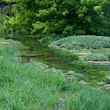

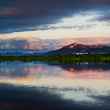



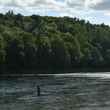
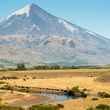


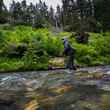




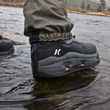




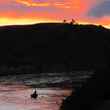
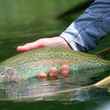



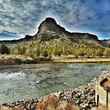

Comments